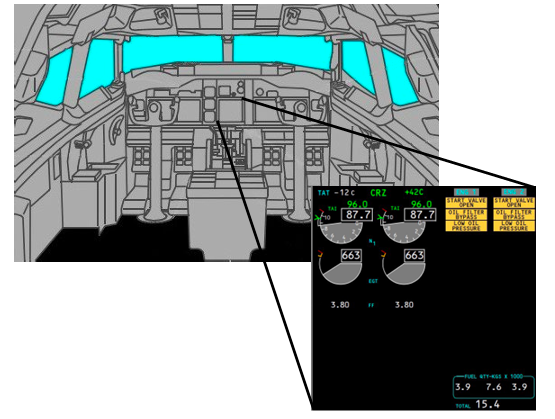Lessons Learned: Insufficient Thrust Upon Takeoff

In this Lessons Learned investigation by AAIB (Air Accidents Investigation Branch), Boeing 737-8K5 (G-FDZS) experienced insufficient thrust on takeoff from Bristol airport on March 4, 2024.
When the crew began its takeoff from Bristol airport, the autothrottle (A/T) disconnected when the Takeoff/ Go-Around switch (TOGA) was selected. As a result, neither thrust lever advanced automatically toward the calculated N1 takeoff setting. Despite attempting to reengage it, the A/T remained in an inactive mode. The takeoff was conducted with 84.5% N1 instead of 92.8% N1 , with the associated reduction in aircraft performance. The rotation occurred close to the end of the runway and the aircraft climb rate was initially very slow.
The crew increased power on the engines toward the takeoff setting from 450 ft aal. The rest of the flight to Las Palmas was completed without incident, although the A/T remained unavailable. The uncommanded disconnect was likely the result of the voltage being supplied to the autothrottle servo motor (ASM) being too low which was a known problem with the B737 A/T and the older revision of the ASM part fitted to G-FDZS.
The operator has taken a number of safety actions to address both the actions to be taken in the event of an uncommanded disconnection of the A/T at takeoff, and the monitoring of events through flight data monitoring.
History of the flight
The aircraft was prepared for a flight from Bristol Airport to Las Palmas, Gran Canaria, with six crew and 163 passengers. The flight was a line-training sector for a new captain who was sitting in the left seat, with a training captain, acting as aircraft commander, sitting in the right seat.
Having completed their preflight preparation, the aircraft left the stand at Bristol to taxi to Runway 09 at 1041 hrs. The A/T arm switch on the Mode Control Panel (MCP) had been set to ARM during the before start procedures in accordance with the operator’s SOPs. The aircraft taxied onto Runway 09 at 1104 hrs and was cleared for takeoff shortly afterwards. The left seat pilot handed control of the aircraft to the right seat pilot who was to be PF for the sector. The PF advanced the thrust levers to 40% N1 and paused for the engines to stabilize before pressing the TOGA which engages both the A/T in N1 mode and the autopilot/flight director system (AFDS) in takeoff mode. At this point, the A/T disengaged with an associated warning and the A/T arm switch on the MCP was reengaged by the PM almost immediately afterwards. At the same moment, the PF advanced the thrust levers manually towards the required takeoff setting before releasing the thrust levers for the left seat occupant to control in accordance with the SOPs. Both pilots believed that the A/T was engaged, and they expected it to function as if in TOGA mode from this point.
When the A/T arm switch was reengaged on the MCP after initial A/T disengagement, it did not control the thrust lever servos as the pilots expected and instead entered an armed mode. As a result, the thrust levers did not advance to the required thrust setting and neither pilot moved them from the position the PF had set them to. Despite the SOP requiring that the thrust is set by 60 kt and checked as correct at 80 kt, the incorrect setting was missed by both pilots. This resulted in the aircraft takeoff being conducted with significantly less thrust than required, 84.5% N1 was used instead of 92.8% N1 , with the associated reduction in aircraft performance. The rotation point was 260 m from the end of the runway and the aircraft crossed the end of the runway at a height of approximately 10 ft. Both pilots had noted how close to the end of the runway they were. The flight to Las Palmas was uneventful apart from several attempts to re-engage the A/T and subsequent disengagements.
Content/image credit: AAIB, “AAIB investigation to Boeing 737-8K5, G-FDZS,” published December 5, 2024. The link above contains safety actions recommended for this incident.



